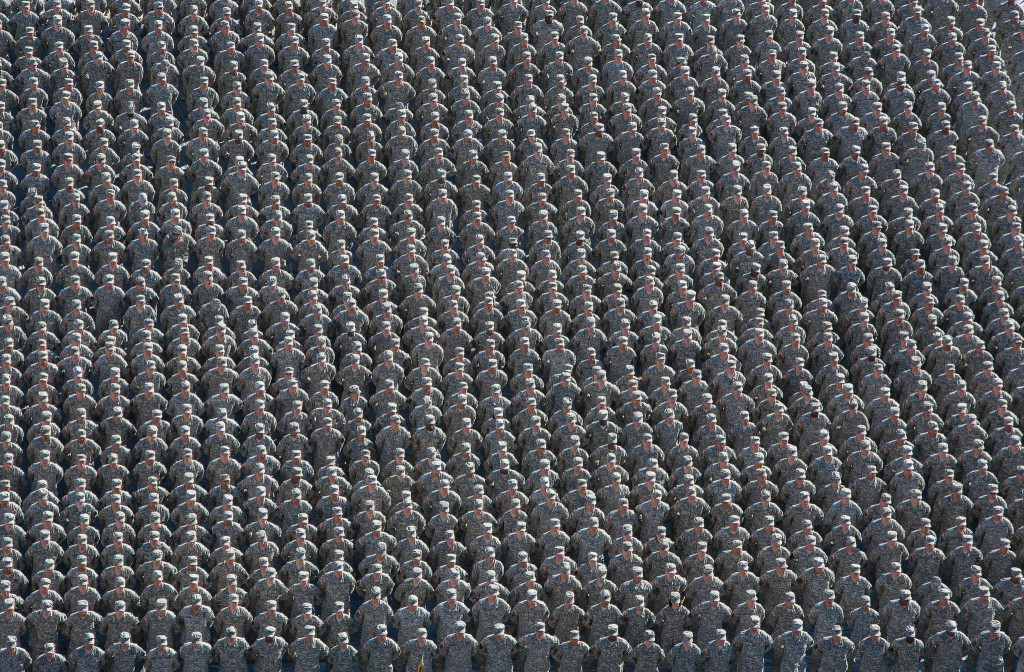Needed Now: A Realistic Strategy Force Structure for the 21st Century

Congress has finally passed, and President Barack Obama signed, a defense bill for fiscal year 2015. With the base budget ($496 billion) and add-ons for overseas contingency operations (OCO) and a presidential increase, defense spending will come in at about $600 billion or so. And the Pentagon hopes that sequestration, which cuts half a trillion dollars from defense over 10 years, will be reversed.
But the reality is that the current level of spending cannot and will not sustain current force levels. Nor does the United States need to maintain the current active duty force (about 1.25 million) along with a large reserve component and nearly equally sized civilian workforce even as future operations in Iraq and Afghanistan will demand substantial deployments. We can maintain the security and safety of the nation with a smaller force if we do it smartly.
Unfortunately, few appreciate these realities or understand, if change does not begin soon, why the Department of Defense faces becoming a 21st century variant of the so-called “hollow force” that emerged after the Vietnam War.
Three reasons for this conclusion should be clear and are not. First, the current strategy is imprecise and unspecific. And a new strategy has not yet been written. A force of a few million or a small fraction of that could be justified. Second, mismatches between budget and built-in inherent cost growth increases for pay, allowances, overhead, retirees, medical care and weapons systems, if unchecked, will require across the board cuts of between one-third to two-fifths by decade’s end. Finally, personnel policies to account for the transition from a nation at war for 13 years in two diverse theaters to the world of tomorrow are incomplete.
Many already decry cutting the Army to 450,000 active duty soldiers with the prospect of a further decrease to 420,000. Yet there is something called the U.S. Marine Corps of about 175,000. That gives the nation a total ground force capacity of 625,000 (or 615,000 if the Army is further cut). Unless the United States is prepared to reoccupy Iraq and Afghanistan or invade Iran or China, surely that number is more than enough to meet any operational needs barring a world war.
What then might a force structure for the 21st century look like? First, predicting the future is inexact at best. However, it seems difficult to envisage a future in which the United States would have to deploy or have forward-deployed to Europe, Korea and the Middle East more than 150,000 forces from each coast for a total of 300,000 personnel. To sustain that number, a total active duty force (absent reserves and civilians) of about 800,000 to 900,000 is needed. Of course the provisos would be that such a force was well trained, incentivized and well-equipped for its tasks.
That force would be based on tiered readiness. About one-third would be deployed or prepared to deploy. Another third would be training for deployment. And the last tranche would be in a stand-down status awaiting the transition back to deployed and ready to deploy status.
For the Navy, the number of active duty ships would be between 200-250, down from the planned 306. However, scrapping aircraft carriers, nuclear submarines and other combatants well before their effective service lives would be foolish. Some could be put in a reduced readiness or cadre status if needed. The Air Force would be organized similarly.
Underwriting this force is the need for a real revolution in military education. The most potent of weapons is people. Whether private or general, people must be prepared not only for traditional and predictable missions across the whole spectrum of violence and conflict. The greater challenge is preparing for the unknown and unexpected. Given the revolutions in wargaming, information technologies and hard and software, this refocus of education could become a great incentive for the active duty forces to hone the necessary skills that might be needed.
In today’s dollars, provided internal cost growth is contained, funding of about $450 to 500 billion should be sufficient to keep this force at high levels of readiness and morale, making it the most capable in the world. Great care must be given to how, where and when force reductions are made. People must be treated fairly and even more so when downsizing. And a plan for regenerating and reconstituting a larger force along with equipment is needed.
Part of this strategy is shifting the defense industrial base to an intellectual property defense industrial base to maintain and expand IP. Keeping production capacity for ships, aircraft and other systems open will require funding and other incentives in case future conditions change (note there is always a downside to a tepid base). However, the alternative of losing that capacity is a worse option.
Many will disagree with this approach or the forecast of a “hollow force” taking hold. Others will argue we will spend more. However, as deficits and entitlements grow and interest rates rise, which they will, defense spending will be hit and hit hard. If this unrealism persists, we should not be surprised by the outcome.
Harlan Ullman is senior advisor at the Atlantic Council and Business Executives for National Security, both in Washington, DC. This column draws from his latest book A Handful of Bullets: How the Murder of Archduke Franz Ferdinand Menaces the Peace.

